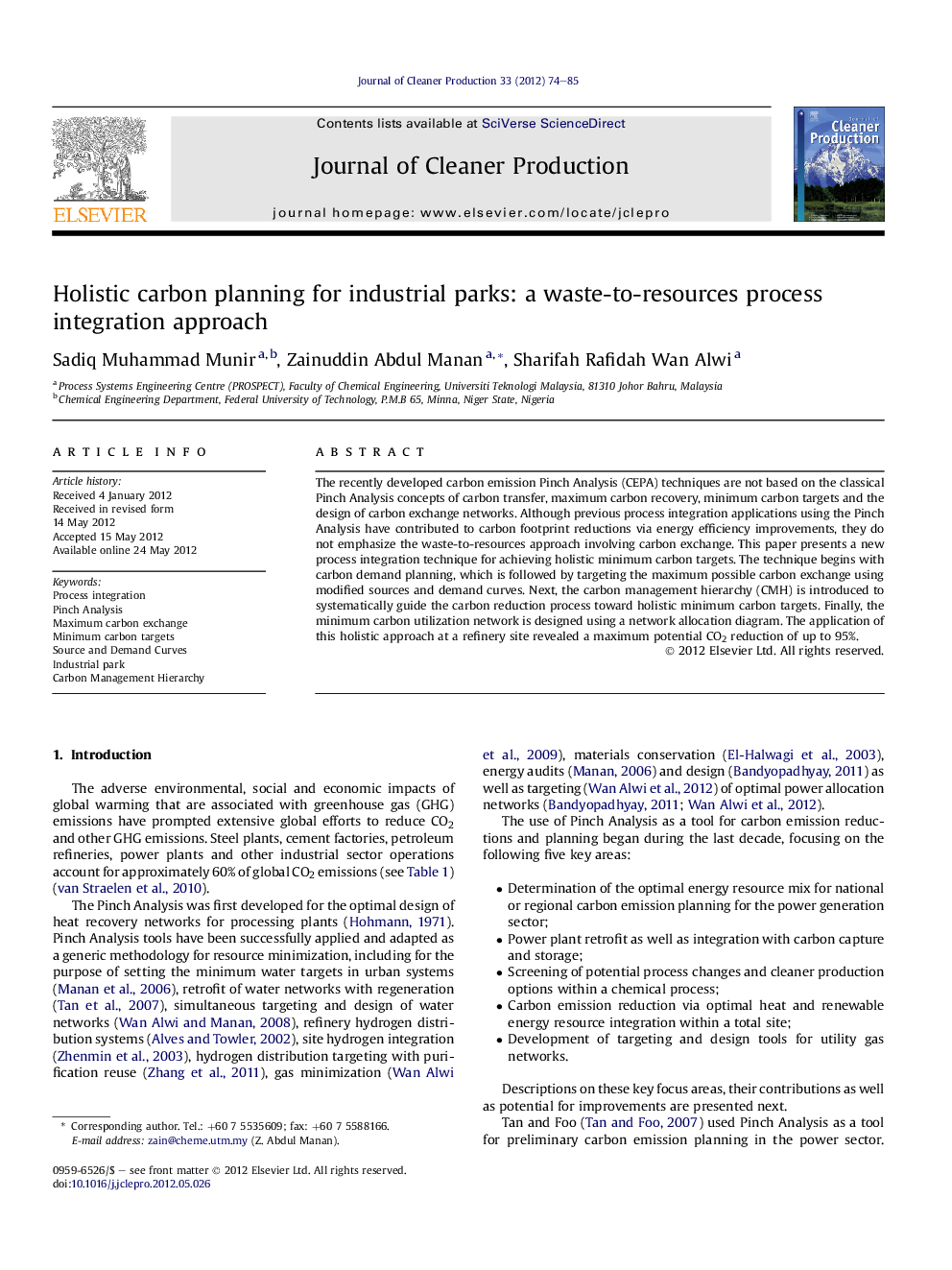| Article ID | Journal | Published Year | Pages | File Type |
|---|---|---|---|---|
| 1745663 | Journal of Cleaner Production | 2012 | 12 Pages |
The recently developed carbon emission Pinch Analysis (CEPA) techniques are not based on the classical Pinch Analysis concepts of carbon transfer, maximum carbon recovery, minimum carbon targets and the design of carbon exchange networks. Although previous process integration applications using the Pinch Analysis have contributed to carbon footprint reductions via energy efficiency improvements, they do not emphasize the waste-to-resources approach involving carbon exchange. This paper presents a new process integration technique for achieving holistic minimum carbon targets. The technique begins with carbon demand planning, which is followed by targeting the maximum possible carbon exchange using modified sources and demand curves. Next, the carbon management hierarchy (CMH) is introduced to systematically guide the carbon reduction process toward holistic minimum carbon targets. Finally, the minimum carbon utilization network is designed using a network allocation diagram. The application of this holistic approach at a refinery site revealed a maximum potential CO2 reduction of up to 95%.
Graphical abstractFigure optionsDownload full-size imageDownload as PowerPoint slideHighlights► A new holistic process integration technique to plan for carbon emission reductions. ► A modified source and demand curves to target the maximum carbon exchange. ► The minimum fresh carbon as well as carbon emission targets. ► A Carbon Management Hierarchy (CMH) to guide process changes.
